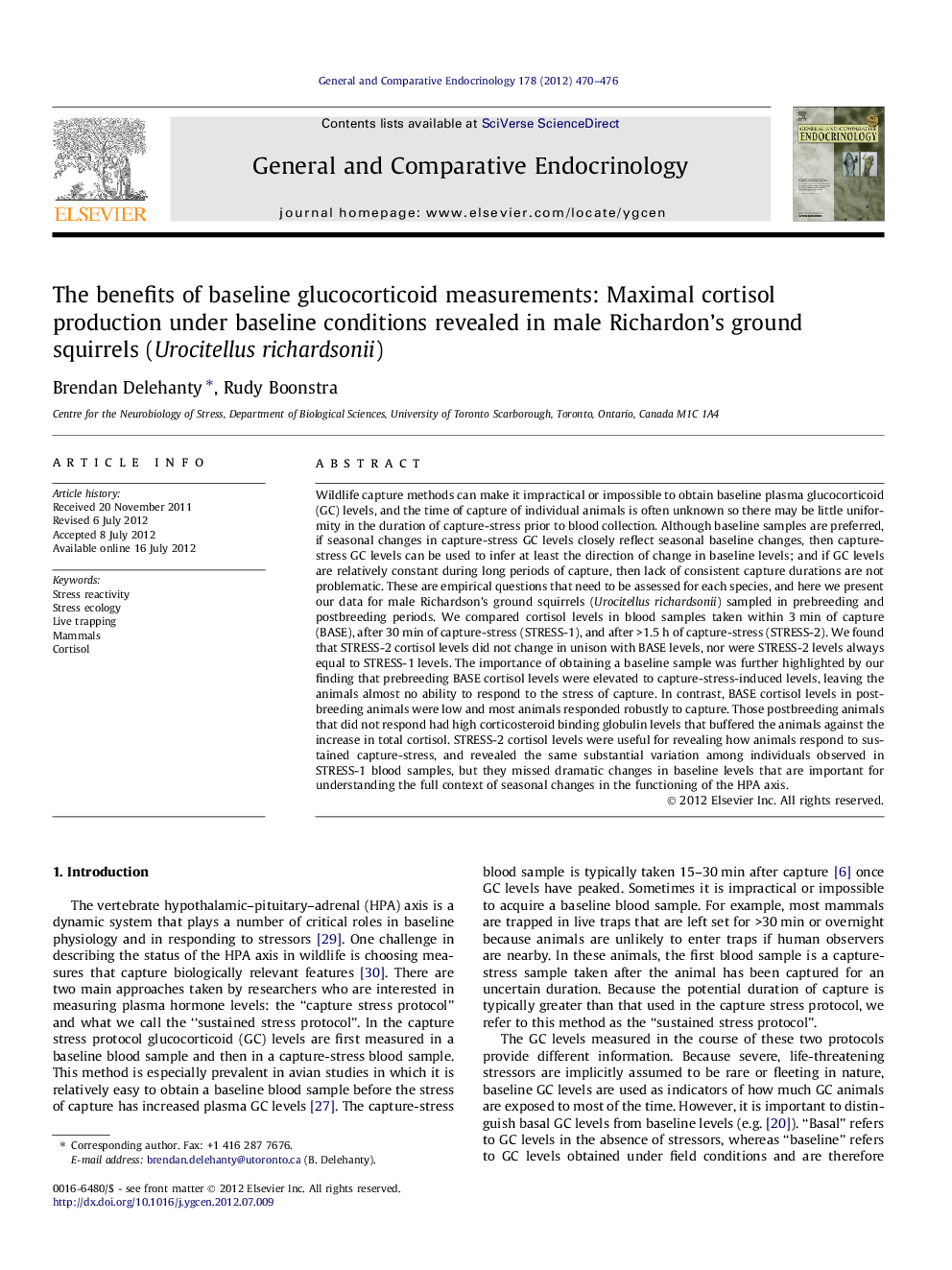| کد مقاله | کد نشریه | سال انتشار | مقاله انگلیسی | نسخه تمام متن |
|---|---|---|---|---|
| 2800607 | 1156117 | 2012 | 7 صفحه PDF | دانلود رایگان |

Wildlife capture methods can make it impractical or impossible to obtain baseline plasma glucocorticoid (GC) levels, and the time of capture of individual animals is often unknown so there may be little uniformity in the duration of capture-stress prior to blood collection. Although baseline samples are preferred, if seasonal changes in capture-stress GC levels closely reflect seasonal baseline changes, then capture-stress GC levels can be used to infer at least the direction of change in baseline levels; and if GC levels are relatively constant during long periods of capture, then lack of consistent capture durations are not problematic. These are empirical questions that need to be assessed for each species, and here we present our data for male Richardson’s ground squirrels (Urocitellus richardsonii) sampled in prebreeding and postbreeding periods. We compared cortisol levels in blood samples taken within 3 min of capture (BASE), after 30 min of capture-stress (STRESS-1), and after >1.5 h of capture-stress (STRESS-2). We found that STRESS-2 cortisol levels did not change in unison with BASE levels, nor were STRESS-2 levels always equal to STRESS-1 levels. The importance of obtaining a baseline sample was further highlighted by our finding that prebreeding BASE cortisol levels were elevated to capture-stress-induced levels, leaving the animals almost no ability to respond to the stress of capture. In contrast, BASE cortisol levels in postbreeding animals were low and most animals responded robustly to capture. Those postbreeding animals that did not respond had high corticosteroid binding globulin levels that buffered the animals against the increase in total cortisol. STRESS-2 cortisol levels were useful for revealing how animals respond to sustained capture-stress, and revealed the same substantial variation among individuals observed in STRESS-1 blood samples, but they missed dramatic changes in baseline levels that are important for understanding the full context of seasonal changes in the functioning of the HPA axis.
► We compared two methods of describing wildlife stress responses.
► One uses baseline and acute stress bleeds, the other only uses a stressed bleed.
► Baseline cortisol levels change independently of stressed bleed levels.
► Pre-breeding baseline cortisol was so high that capture could not increase levels.
► Relying on stressed cortisol levels misses important stress axis dynamics.
Journal: General and Comparative Endocrinology - Volume 178, Issue 3, 15 September 2012, Pages 470–476